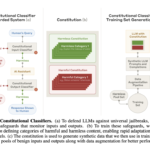The combined cost of mortgages, taxes and insurance now takes up a larger share of household income than it has since the early 1980s, according to an affordability index from John Burns Research & Consulting. The company’s newest National Housing Market Outlook shows that buyers are gravitating toward government-backed loans in their search for affordability.
The Burns Affordability Index, which measures the ratio of housing costs to income, is now at 42.4%, a figure that’s well above the historic norm of 32.8%. Chris Porter, a senior vice president at the firm and the author of the latest outlook, said this correlates with buyers dedicating more of their income to housing and seeking accessible financing options. It also ties into architects and builders creating smaller, denser homes to help close the affordable housing supply gap.
As a result, more buyers are turning to products like Federal Housing Administration (FHA) loans, which accounted for 24% of primary home purchases in 2024, and U.S. Department of Veterans Affairs (VA) loans, which made up 10%, according to purchase loan lock data from Optimal Blue.
Together, FHA and VA loans represented 34% of the market, up from less than 30% in 2022 and the highest share since late 2020. Conversely, Optimal Blue data revealed that conforming loans through Fannie Mae and Freddie Mac made up 60% of primary residence purchases in 2024, down from 63% during their peak.
“Since many of the existing homeowners who purchased or refinanced during the pandemic boom are not giving up their low rates to make moves, most of the individual buyers in the market right now are first-time homebuyers who are facing a massive affordability shock,” Donella Strickland, a loan officer at CMG Home Loans, told HousingWire.
“In the last two years, rent as well as mortgage payments have increased significantly, which has made it more difficult for many potential homebuyers to save for down payments.”
Strickland said that 75% of the loans she closed last year were government loans, adding that all of them were purchase money. “I think the same could be said for most in my industry,” she added. “Affordability is a real challenge right now, and with the fact that FHA and VA loans require a lower down payment, and allow for the debt-to-income ratio to go higher than conventional, these types of loans are the bulk of what we are seeing in the market right now.”
But the “uptick” in government-backed loans being picked up as an affordable option varies by location. High-cost markets, for example, may be less keen on accepting FHA or VA loans over their conventional counterparts.
Sean Zalmanoff, founder and chief loan officer at St. Louis-based Better Rate Mortgage, noted that in his local area, FHA loans are more common for those with higher debt-to-income ratios. He noted that despite a national slowdown in home sales, St. Louis continues to see multiple offers on good houses.
Zalmanoff attributed the uptick in FHA loans to sellers accepting them when houses aren’t selling quickly. “We do a lot of the Fannie Mae affordable home financing too,” he added. “Our 80% of our area median income is $82,560, which when you have houses that are $300,000 and somebody who can qualify at $83,000, we have the ability for a lot of Fannie Mae 3% down loans.”




